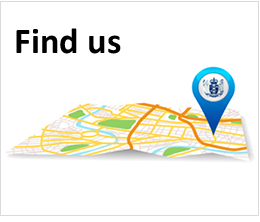What you'll need to make a claim
- Nearest District Court
- Information you need
- Your contact details
- Respondent’s full contact details
- Other people or organisations involved
- Your insurance – if your claim might be covered
- Details of your claim
- What you’ve done to settle the dispute
- Examples of completed forms
When you make a paper application you must give us 3 copies of the form and any other documents you include. You don’t need to do this when you apply online.
Nearest District Court
You need to know the District Court closest to where you live. If you apply online you’ll be asked for this information. If you apply by delivering the form in person you’ll need to go to this court.
Find your local court(external link)
Information you need
The Tribunal won’t follow up if you don’t provide information. It’s up to you to make sure you have all the information below when you make your claim.
When you fill in the form you’ll need to give:
- your name, address and phone number
- the respondent’s name, address and phone number (the respondent is the person or organisation you’re complaining about)
- details of any other parties involved (‘second respondent’)
- your insurance company’s details, if your insurance might cover your claim
- details of the dispute and the amount you are claiming
- what you’ve done to try to settle the dispute (‘Applicant’s contact with respondent’ – when you make a claim, you’re called the applicant).
Your contact details
Let us know straight away if your contact details change.
Keeping your contact details private
You can ask for your address or other contact details to be kept private from the respondent. You can do this in the ‘Applicant's contact with respondent’ section. Add your request and your reasons at the top of this section.
Sometimes the respondent may need to send you evidence or other documents about the dispute. If you want to keep your address private, let us know if there’s another way the respondent can send you documents (such as by email or to a postal address). If not, documents will be sent to you by the court.
Respondent’s full contact details
If you don’t have the respondent's correct details it can stop your claim going ahead.
If you have the respondent’s full contact details it can also make it easier to enforce the Tribunal’s decision if it is in your favour. As well as their name, address and phone number, it can help to have:
- their home and business address
- a PO Box number
- their email address
- details of any vehicle they own.
Full details if the respondent is a company or other organisation
You must give the legal name of the organisation.
- Check if the business is a limited liability company:
- These companies include ‘Ltd’ in the business name.
- The legal name of the company may be different from their trading name. Check any invoice you have to find their legal name.
- You can get their name (and their registered address) on the Companies Office website(external link), or
- via New Zealand Business Number (NZBN) by checking the NZBN register at nzbn.govt.nz(external link).
-
If the business isn’t a limited liability company, give the owner’s name.
-
If the organisation is an incorporated society or a charitable trust, you can find their details on the Register of Societies website(external link), or via New Zealand Business Number (NZBN) by checking the NZBN register at nzbn.govt.nz(external link).
- If a trust isn’t a charity (for example, a family trust) you need to include the names of the trustees.
Other people or organisations involved
If there’s another person or organisation who you want to claim against, add their details under the section for the ‘second respondent’.
For example, you might claim against both a business and one of their staff.
Your insurance – if your claim might be covered
If your insurance might cover the dispute you want to claim for, contact your insurer.
Your insurance company has the right to take part in the Tribunal hearing if you make a claim.
Sometimes your insurance company may offer to make your claim for you. In this case:
- you need to agree for them to do this
- you’ll still go to the hearing as a witness.
They may also offer to pay your claim fee.
You can choose not to put in an insurance claim if, for instance, you don’t want to lose your no claims bonus.
If you don’t want to make an insurance claim, you can ask your insurance company to sign the waiver on the Acknowledgement from Applicant’s Insurer form.
Details of your claim
You need to give clear details of the dispute and what you want done to settle it. In general, you should cover:
- what happened
- when
- where
- who was involved
- what the damage or loss was
- what you want done about it
- the amount you’re claiming.
Other documents
You can attach other documents with your form.
If you’re applying online, each attachment needs to be under 5MB.
If you’re applying by paper form, you need to give us 3 copies of the form and any other documents.
Amount you’re claiming
You can use the Tribunal to settle small claims up to $30,000.
What you’ve done to settle the dispute
In the section ‘Applicant’s contact with respondent’, describe what you’ve done to try to resolve the dispute and what response you’ve had from the other party. You need to show that you’ve tried to sort out the dispute yourself before going to the Tribunal.
Examples of completed forms
This page was last updated:
